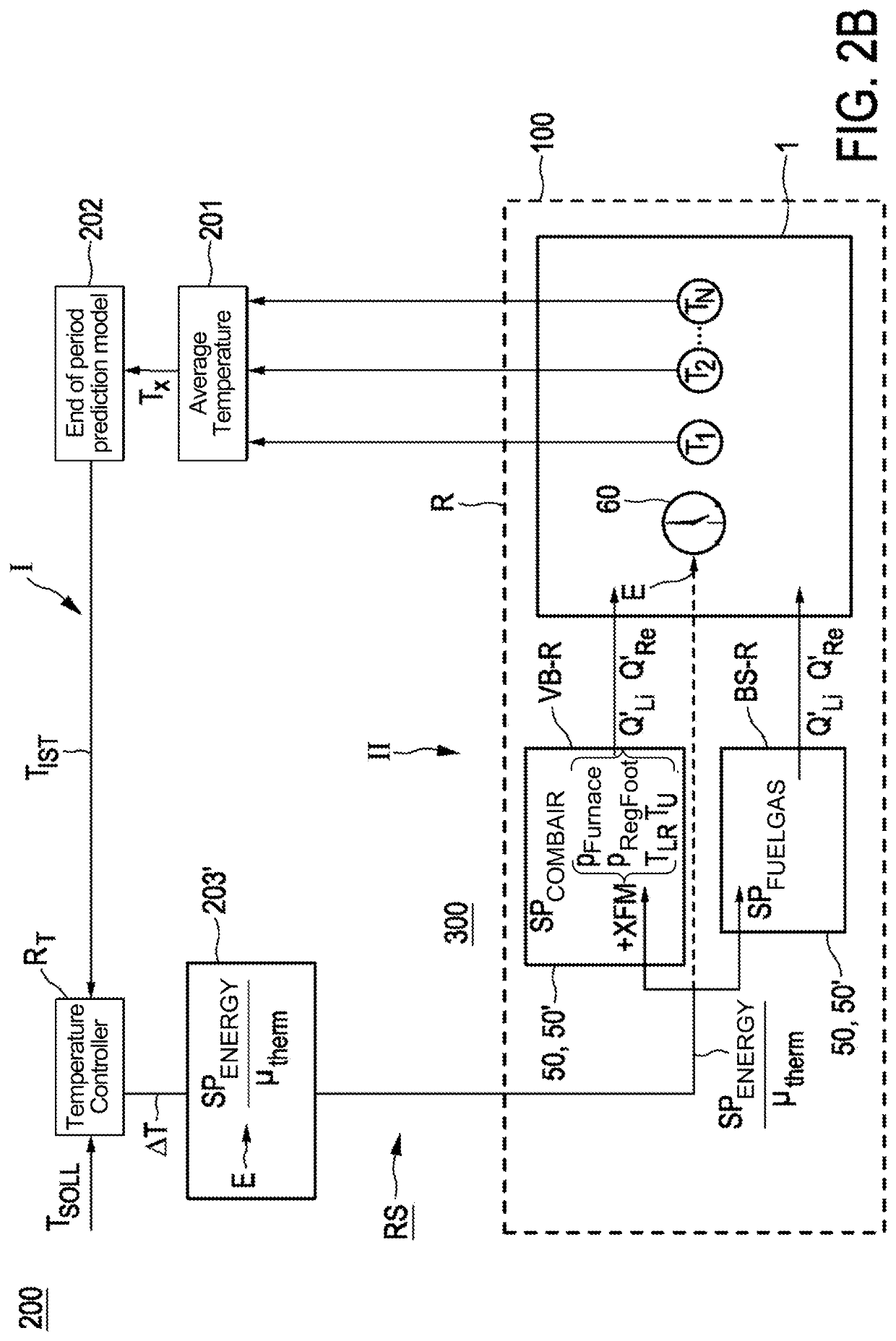Method for controlled operation of a heated, in particular regeneratively heated, industrial furnace, open-loop and closed-loop control unit, and heatable industrial furnace
a technology of industrial furnaces and control units, which is applied in the direction of furnaces, lighting and heating apparatus, manufacturing tools, etc., can solve the problems of undesired control errors, inability to adjust the temperature, so as to increase the ingress of infiltrated air and smooth the level
- Summary
- Abstract
- Description
- Claims
- Application Information
AI Technical Summary
Benefits of technology
Problems solved by technology
Method used
Image
Examples
Embodiment Construction
[0133]FIG. 1 shows in a simplified representation a regeneratively heated industrial furnace 100 with a furnace chamber 10, the upper furnace chamber 1 of which is controlled as a controlled system and in which the lower furnace chamber 2 has a glass melting end that is not shown any more specifically. Glass contained in the glass melting end is heated by way of the furnace chamber 10 above the melting temperature and is melted and suitably treated for the production of flat glass or the like. The industrial furnace 100 is in the present case heated by fuel, in the present case in the form of fuel gas, being injected into the upper furnace 1 by way of a number of laterally attached fuel injectors 20. Of the fuel injectors 20, in the present case a left injector 20 is shown. Of the further fuel injectors 20′, in the present case a right injector 20′ is shown. For the sake of simplicity, the same designations are used below for parts that are the same or similar or parts that have the...
PUM
| Property | Measurement | Unit |
|---|---|---|
| energy | aaaaa | aaaaa |
| calorific value | aaaaa | aaaaa |
| temperature | aaaaa | aaaaa |
Abstract
Description
Claims
Application Information
 Login to View More
Login to View More - R&D
- Intellectual Property
- Life Sciences
- Materials
- Tech Scout
- Unparalleled Data Quality
- Higher Quality Content
- 60% Fewer Hallucinations
Browse by: Latest US Patents, China's latest patents, Technical Efficacy Thesaurus, Application Domain, Technology Topic, Popular Technical Reports.
© 2025 PatSnap. All rights reserved.Legal|Privacy policy|Modern Slavery Act Transparency Statement|Sitemap|About US| Contact US: help@patsnap.com



